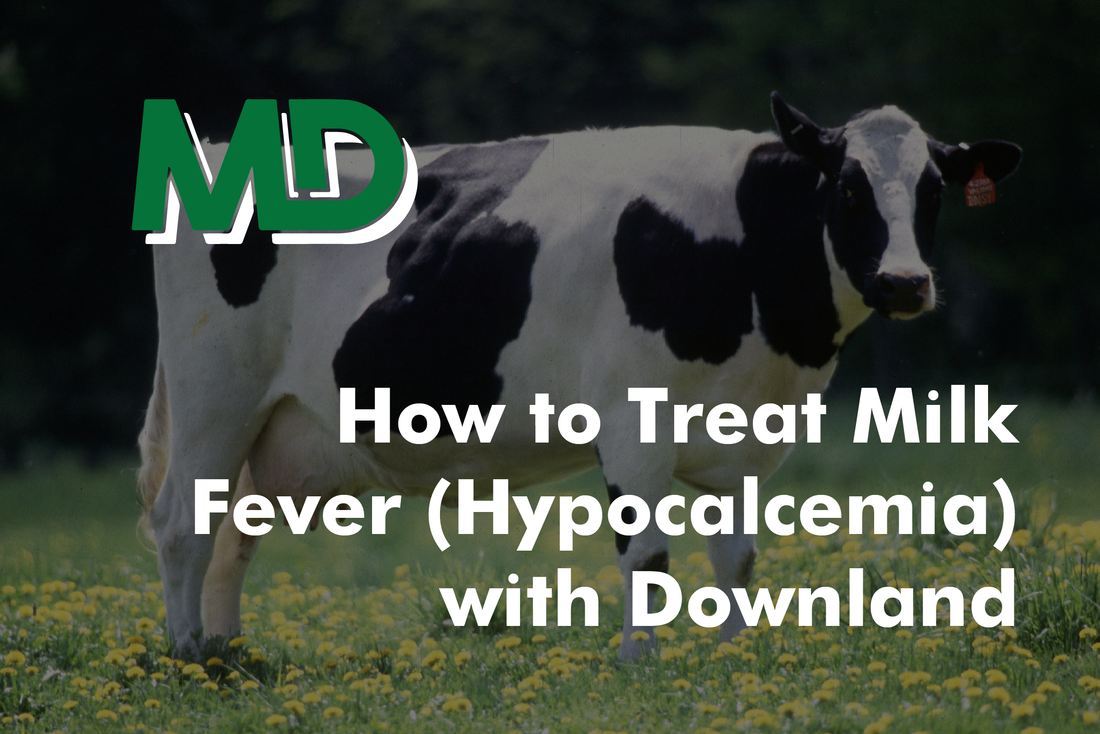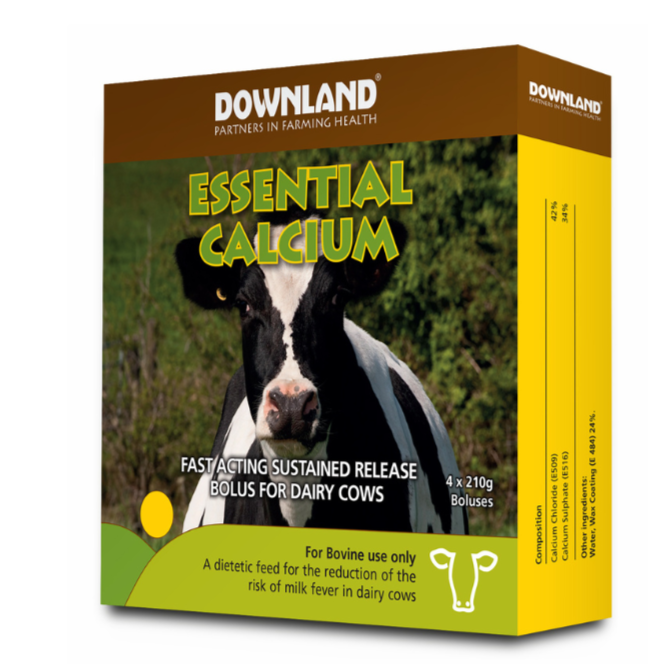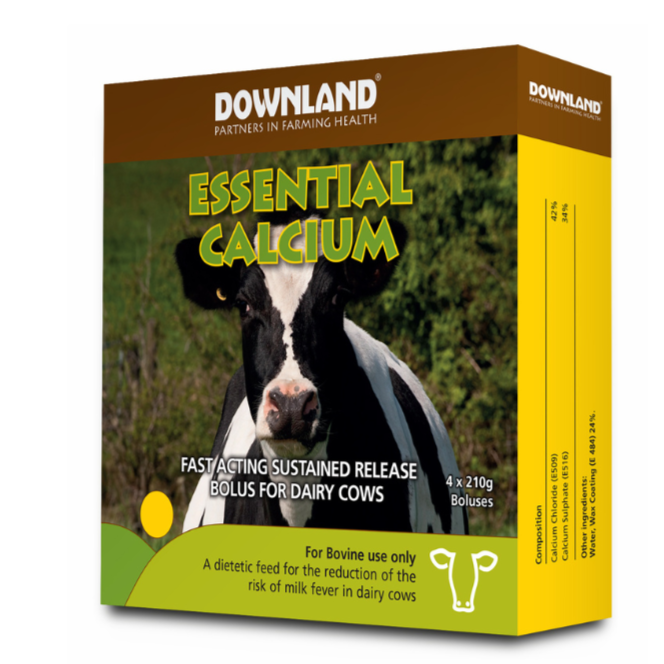
Share
What is Milk Fever?
A shortfall in the amount of calcium in the blood available to the cow.
When Does it Occur?
Milk Fever can occur at or near the time of calving. The two lowest points of calcium availability for the cow are 12-hours pre- and 12-hours post-calving. It can also occur in whole-herd ‘runs’ at grass, where there have been flushes of potassium-rich grass (usually in spring or autumn), or in sileage from secondary cuts from after such flushes.
How is it Caused?
The onset of milk production resulting in the sudden requirement for colostrum and milk. This causes levels of calcium in the blood to drop rapidly. A dry cow needs to absorb 23 g of calcium daily; this increases to over 40g in the milking cow. Colostrum requires 2.5 g calcium per litre, milk requires 1.2 g calcium per litre. If the cow is unable to mobilise enough calcium quickly enough from either her bone reserves or absorb sufficient amounts from her diet to maintain these levels of calcium in the blood, milk fever can occur. In order to efficiently maximise the calcium absorbed from her diet and mobilised from bones, she needs to be in a state of mild metabolic acidosis.
Milk Fever is Visible in 2 Stages:
Stage 1: Wobbly and trembling muscles. Possible loss of appetite.
Stage 2: Down - It can also be linked to a reduction in smooth muscle function, which can be extremely painful.
Importance of Calcium in the Cow

How do Cows Mobilise Calcium?
A cow has to have her system in a mild metabolic acidosis to be efficient at both mobilising calcium and increasing absorption – when she isn’t efficient at mobilising calcium it can be that her system is too alkaline, so giving the right type of calcium is very important to help her system to achieve peak absorption when she needs it, as well as the correct amount of calcium to support her needs too. Supplementation is therefore required if this mobilisation process does not happen quick enough to meet the cow’s demands for colostrum / milk production.

Injectable Calcium vs Calcium Bolus
|
Injectable Calcium |
Calcium Bolus |
Cow’s Daily Requirement for Calcium |
|
|
Calcium |
11.9 g (as either 40 % Calcium borogluconate solution OR 40 % Calcium borogluconate solution + 5 % Magnesium hypophosphate) |
43g (as Calcium sulphate and Calcium chloride) |
34.95 g (580 kg Holstein in early lactation producing colostrum). ~50 g for Holstein producing 20 l. |
DO NOT give a downer cow a calcium bolus until she is back on her feet, as her swallowing reflex can be impaired. She can then be given an Essential Calcium bolus to give a longer supply of the right forms of calcium to aid her recovery.
ESSENTIAL CALCIUM is a fast-acting sustained release calcium bolus for adult dairy cows over 400 kg, ideally given pre and post calving. In herds where there are known calcium problems, whole-herd application should be used to reduce the risk of milk fever throughout the herd.
|
43 g of CALCIUM AVAILABLE OF: |
% |
DUAL METHOD OF RELEASE |
|
Calcium chloride (E509) |
56 |
FAST - rapidly absorbed in the rumen and provides an immediately available source of calcium. |
|
Calcium sulphate (E516) |
23 |
SLOW absorbed more slowly in the lower intestines and provides an extended supply of calcium. |
Essential Calcium:
- Reduces the risk of milk fever in dairy cows.
- Provides a large supply of calcium within 50 minutes of administration and for up to 24 hours after.
- Provides more calcium than the average daily requirement of a cow
- Provides the right forms of calcium to support her own calcium mobilisation and utilisation.
- Can be given to all cattle either just prior to or after calving as blanket herd support.
- Neutral taste, aiding administration process.
When to Use Essential Calcium:
If using pre and post calving, administer one bolus at first signs of calving and a second bolus 12-24 hours after the 1st bolus if necessary. For administration post-calving, administer one bolus immediately after calving and a second bolus 12-24 hours after the 1st bolus if necessary. This product can be used on the whole herd to help support cows to mobilise calcium as efficiently as possible.
For any more information on this effective product, or for any other advice please give us a call or come in and see us at Meirion Davies.


